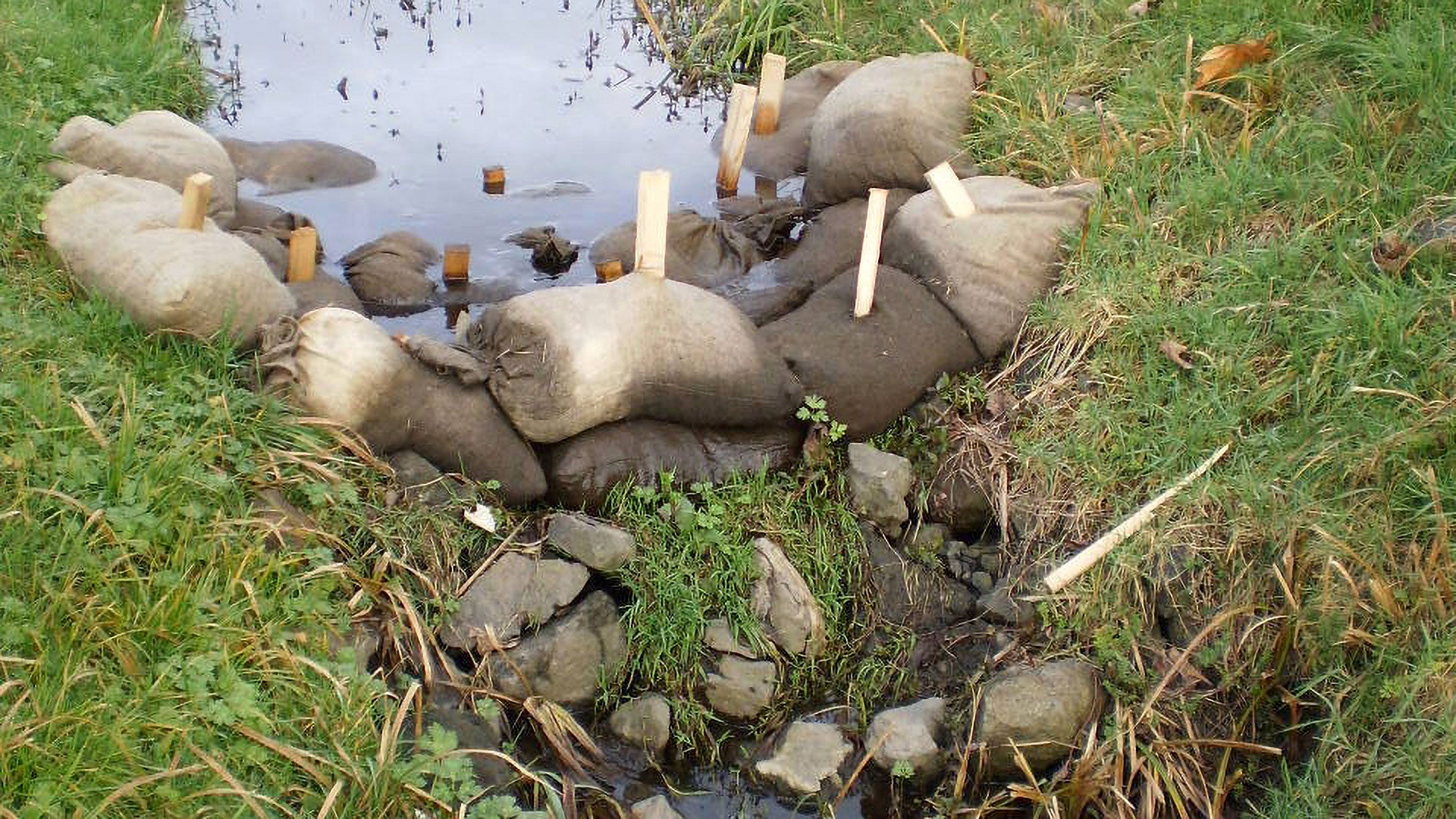
Mycofiltration for Urban Storm Water Treatment Receives EPA Research and Development Funding
UPDATE: Fungi Perfecti has just released the Phase I Report for this project: "Mycofiltration Biotechnology for Pathogen Management."
For more information, please contact Alex Taylor, alex.t@fungi.com
Researchers at Fungi Perfecti will collaborate with environmental engineers at Washington State University to develop a bacteria-eating filter to remove E. coli from storm water.
Kamilche Point, Washington 4 April 2012 – A recent Small Business Innovative Research award from the Environmental Protection Agency (EPA), will foster the development of a novel technology for removing bacteria from storm water runoff. Termed mycofiltration, this approach uses the web-like tissue of mushroom-forming fungi to capture and degrade environmental pollutants before they can reach sensitive water bodies. In collaboration with a research team led by Dr. Marc Beutel at Washington State University, Fungi Perfecti’s research effort will help address the leading cause of critically impaired waters nationwide – bacteria.
While this project has long been a self-funded labor of love for Paul Stamets and Dusty Yao, owners and directors of the research laboratories of Fungi Perfecti, this award marks a significant milestone in development of this technology. “It is gratifying that an organization as influential as the EPA recognizes the potential value of this technology. We have been advocating for mycological solutions to environmental problems for many years, and this award will help put those solutions to work” commented Stamets, who conceived this technology after an outdoor mushroom bed made of woodchips and mycelium removed bacteria from an upland animal pasture on his small waterfront farm – much to his and the Health Department’s surprise.
Although there is substantial evidence that many fungi consume bacteria and secrete antibacterial metabolites, previous mycological research has remained largely isolated to ecological and pharmaceutical explorations. This research effort will expand knowledge of the application of fungal biotechnology in an innovative and interdisciplinary way by tying together the fields of public health, environmental engineering, and mycology. The research team will seek to identify which fungal species and cultivation methods can filter pathogens from storm water while meeting the physical and temporal demands required for use in the field. These objectives will be accomplished through a university-industry collaboration that will use Escherichia coli (E. coli) removal as a model for pathogen filtration to evaluate the efficacy of mycofilters that meet industry-mandated permeability and resiliency requirements for storm water treatment. The research is anticipated to confirm that fungal mycelium can remove E. coli from flowing water, and that mycofilters can be developed to meet design requirements to treat municipal storm water runoff.
As mycofiltration is low-cost, low-impact, and requires relatively little installation space, it may soon provide municipal storm water managers with the perfect tool to help them meet their legal obligations under the Clean Water Act. This is an important contribution, as a recent analysis of the International Stormwater BMP Database showed that Best Management Practices (BMPs) for reducing coliform bacteria levels are generally unable to meet water quality improvement standards. Further, the current status quo BMPs and other proprietary filtrations systems often require large capital investments and have significant additional maintenance costs that may not be appropriate for dense urban areas or for small and/or remote water treatment systems.
Mycofiltration, by comparison is a fraction of the cost with estimates of around one to two thousand dollars per impervious acre, per year. Stamets summed it up simply, saying “the magic of this [mycofiltration] technique is that it can readily incorporate industrial and municipal byproducts such as sawdust from mills and wood chips from municipal arboriculture operations–using this technique to keep bacteria out of our shellfishing beds and spawning streams, well it’s a win-win situation.”
These facts have not been lost on those livelihoods are most affected by bacterial pollution in Puget Sound. Joining his voice to the chorus of tribal and municipal stakeholders in the region, Bill Taylor, the President of Taylor Shellfish Farms stated: “At Taylor Shellfish Farms we are very encouraged by the potential that Paul Stamets’ Mycofiltration technology has to purify stormwater and maintain and our shared clean water resource in Puget Sound. We are grateful that the EPA has decided to fund this important research being conducted by our neighbors on the Kamilche Peninsula.”
The project will run from March through August of 2012, and may result in EPA-funded field testing thereafter, should the bench tests meet their mark. “This is a significant step in my lifelong mission to reinvent gourmet mushroom farms as environmental healing centers for local communities. In essence we can repurpose the ‘waste’ compost from gourmet mushroom growing farms to help prevent pollution. This also offers the opportunity to take advantage of storm debris for not only growing gourmet mushrooms but also for mycofiltration and mycoremediation,” concluded Stamets.
